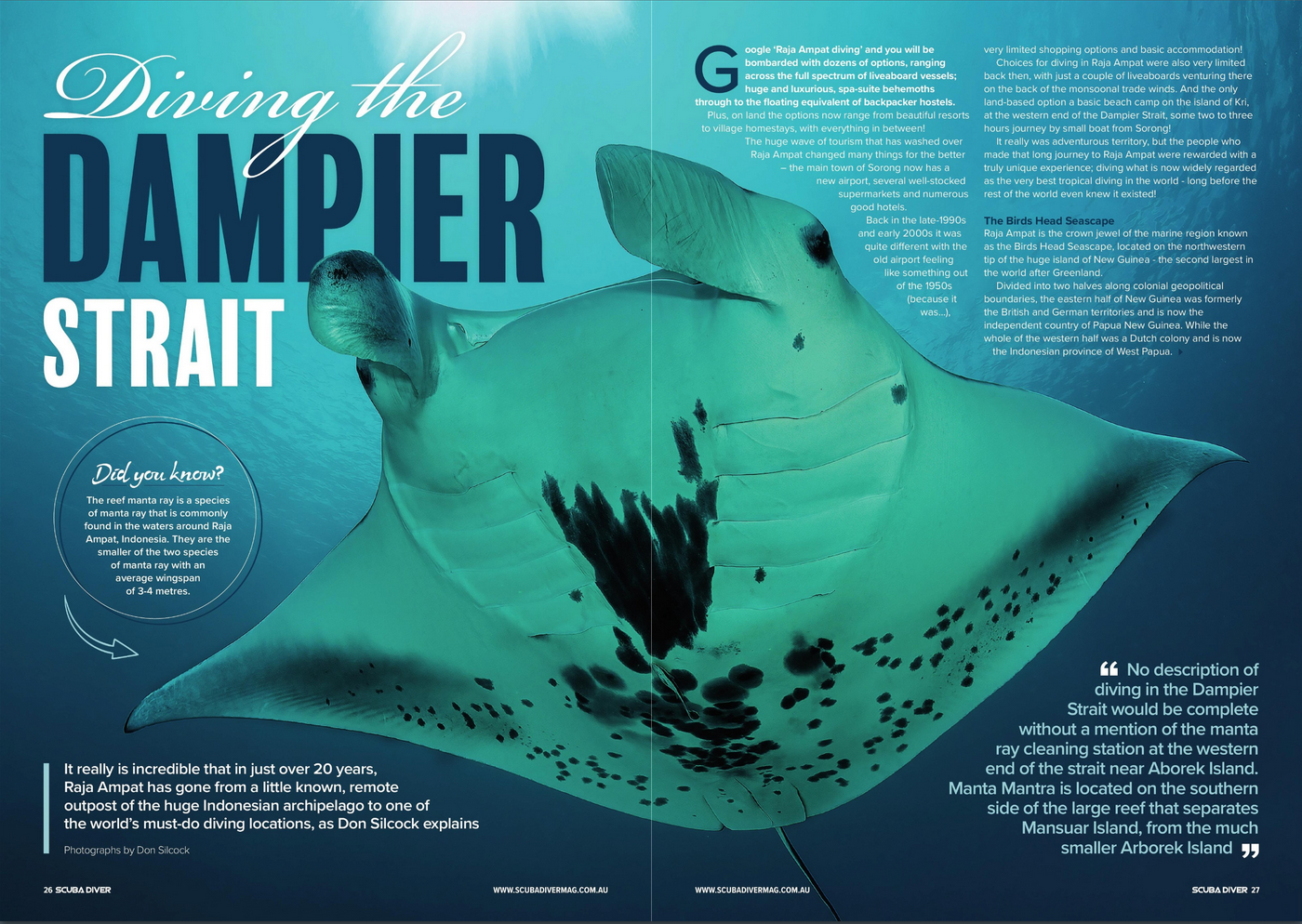Diving the Dampier Strait… It really is incredible that in just over 20 years Raja Ampat has gone from a little known, remote outpost of the huge Indonesian archipelago. To one of the world’s must-do diving locations. Google “Raja Ampat diving” and you will be bombarded with dozens of options. Ranging across the full spectrum of liveaboard vessels: Huge and luxurious, spa-suite behemoths through to the floating equivalent of backpacker hostels. Plus, on land the options now range from beautiful resorts to village homestays, with everything in between!
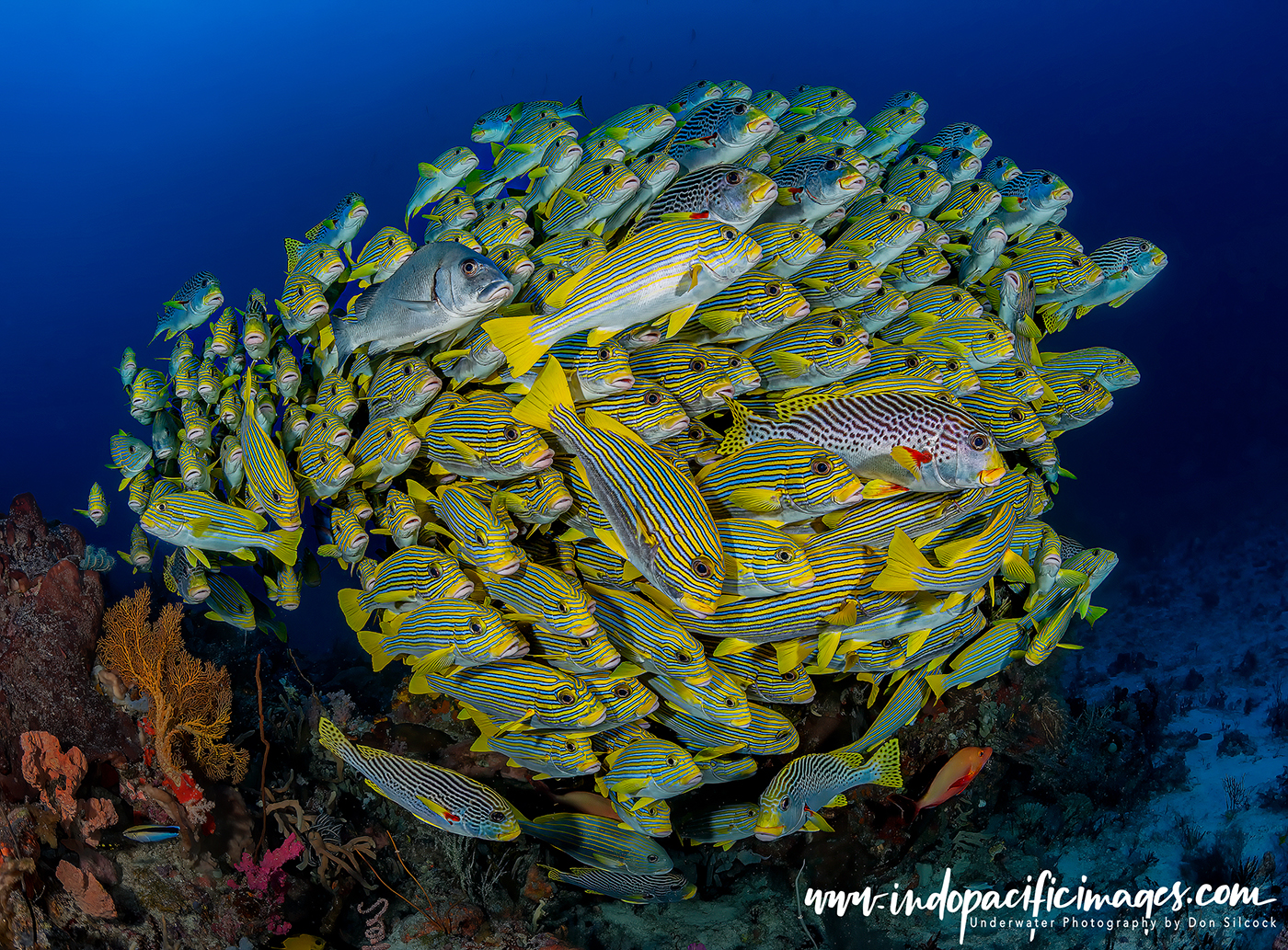
The huge wave of tourism that has washed over Raja Ampat changed many things for the better. The main town of Sorong now has a new airport, several well-stocked supermarkets and numerous good hotels. Whereas, back in the late 90’s and early 00’s it was quite different with the old airport feeling like something out of the 1950’s (because it was…), very limited shopping options and basic accommodation!
Choices for diving in Raja Ampat were also very limited back then. With just a couple of liveaboards venturing there on the back of the monsoonal trade winds. And the only land-based option a basic beach camp on the island of Kri, at the western end of the Dampier Strait, some 2-3 hours journey by small boat from Sorong!
It really was adventurous territory. But the people who made that long journey to Raja Ampat were rewarded with a truly unique experience… Diving what is now widely regarded as the very best tropical diving in the world. Long before the rest of the world even knew it existed!
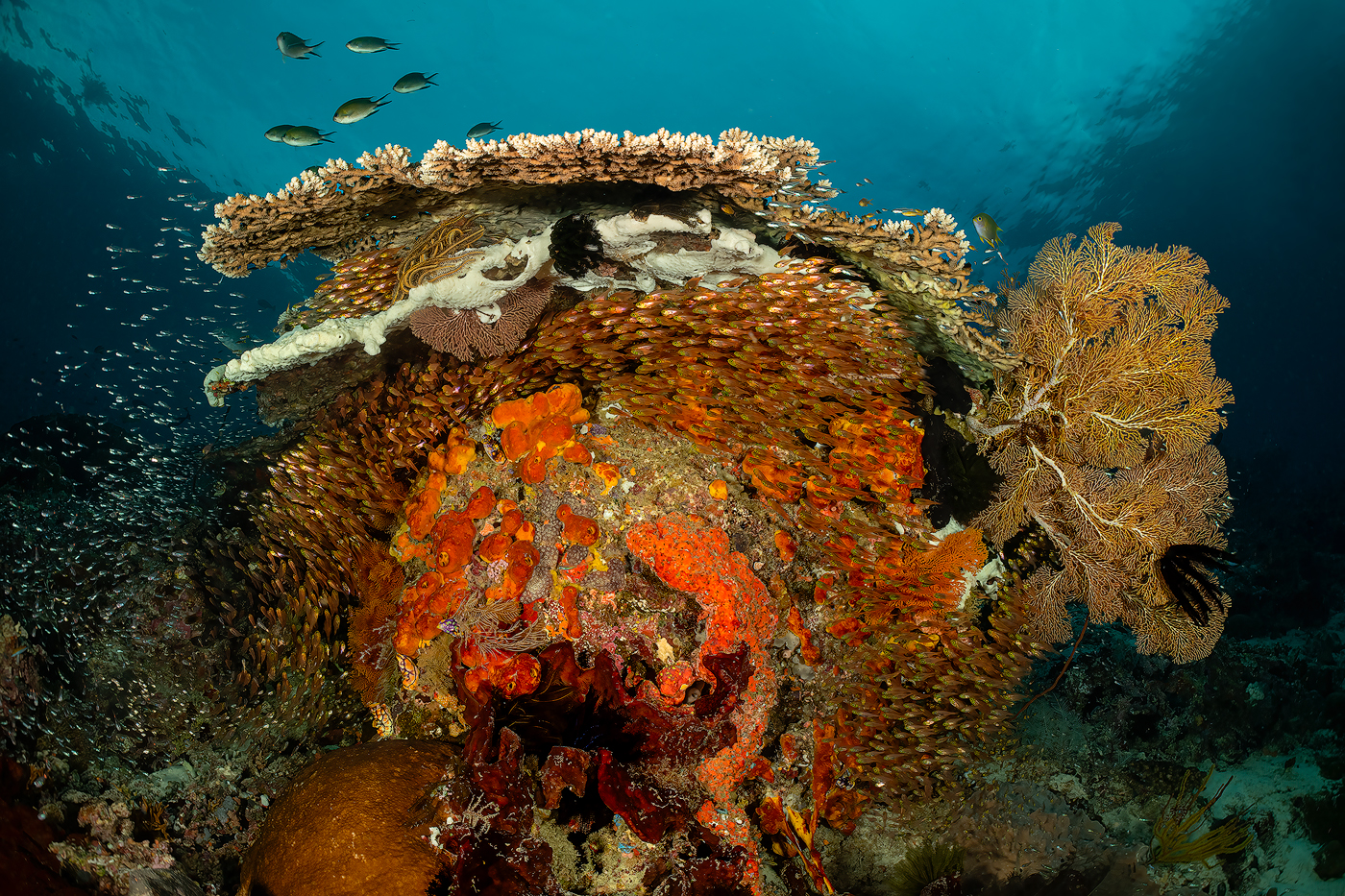
The Birds Head Seascape
Raja Ampat is the crown jewel of the marine region known as the Birds Head Seascape. Located on the northwestern tip of the huge island of New Guinea – the second largest in the world after Greenland.
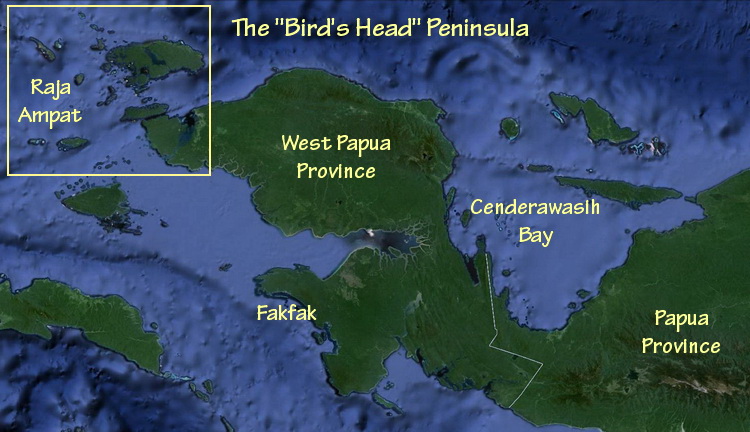
Divided into two halves along colonial geopolitical boundaries. The eastern half of New Guinea was formerly the British and German territories and is now the independent country of Papua New Guinea. While the whole of the western half was a Dutch colony and is now the Indonesian province of West Papua.
Taking its name from the distinctive shape of that northwestern tip. Which, when viewed on a map, resembles the head of a bird. The Birds Head is renowned for its rich marine life, wonderful coral reefs and stunning above-water scenery and has three key areas of interest to divers.
There is Cenderawasih Bay in the north, known for its wrecks, whale sharks and endemic species. While Triton Bay in the south has its healthy and resilient reef systems, endemics and whale sharks. But it is Raja Ampat that is the star of a very special show…
Diving the Dampier Strait – Biodiversity
What makes Raja Ampat so special is its incredible biomass. Which initial assessments by Conservation International quantified at some 1320 species of reef fish and 450 species of coral. Subsequent surveys have increased the number of fish species to around 1600. Which means over 1.5x the number of fish and 2x the number of corals in the Red Sea.
Simply stated it is the most biodiverse marine environment in the world.
The Four Kings
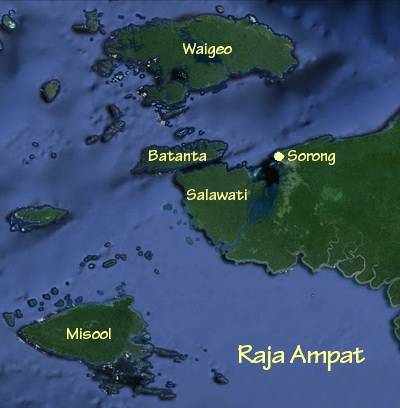
In Bahasa Indonesia, Raja Ampat means the four kings. Which are the main islands of Waigeo, Salawati, Batanta and Misool. Now a self-governing regency, its total area is some 40,000 km² of water and around 1500 smaller islands – roughly the same size as Taiwan.
Diving in Raja Ampat tends to be concentrated into two principal areas. The Dampier Strait between the tip of the Birds Head and the large island of Waigeo. Together with the Southern and Sagof archipelagos near the island of Misool in the far south.
The main sites in the Dampier Strait can be dived from either a land-based resort or a liveaboard. Whereas Misool is mainly dived from the liveaboards that visit the south.
At almost 150km in length and in places 35km wide, the Strait is a significant waterway that channels the nutrient rich waters of the Indonesian Throughflow into the archipelago. But… its relatively shallow depth of around 50m means that the huge flow of water creates a venturi effect. So knowing when and how to dive there is essential.
Get the wrong advice and it will feel like you fast-forwarded straight to the spin cycle. But get it right and you will witness first-hand what those currents, rich in the phosphorous and nitrogen nutrients from the deep-water basins to the north, can produce.
Diving the Dampier Strait – Pioneers
Isolated culturally, ethnically and geographically from the rest of Indonesia and left largely undeveloped. Prior to the early 2000’s very few westerners visited Raja Ampat or the rest of West Papua. It was all too hard… So, as divers we can thank the handful of adventurous and entrepreneurial “bules” (foreigners) who first ventured there and help make it the global diving location it is today.
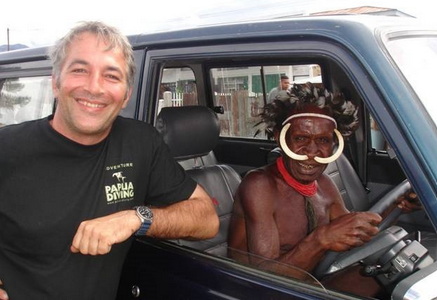
On top of that list is Max Ammer, who first arrived in Indonesia in 1989 from his native Holland. He came in search of Willy’s jeeps abandoned by the US military at the end of WWII on the remote island of Morotai, in the north of Halmahera province.
Max found and salvaged many of those jeeps. And while in Morotai he heard about WWII aircraft wrecks in Raja Ampat. And made his way there by local ferry… An Indiana Jones adventure itself in the late 1980’s!
It turned out that most of the wrecks were underwater in the Dampier Strait. So he set about getting the necessary equipment to be able to find and dive them.
To put that in perspective, at that point in time very few people were diving in Indonesia. And nobody was diving in Raja Ampat – so there were no tanks, compressors or anybody to help.
Max tends to think of such challenges as merely logistical issues to be overcome… And overcome them he did. But finding the wrecks required a lot of solo diving in the strong currents of the Dampier Strait. He was completely dependent on the support of the local Papuans helping him. None of whom had any understanding of what was under the water. But they knew those currents like the backs of their hands and kept Max safe!
He found the wrecks and his stories about them could fill a book or two… But the reef systems and the astounding biodiversity Max saw in the process convinced him he had stumbled on something quite unique.
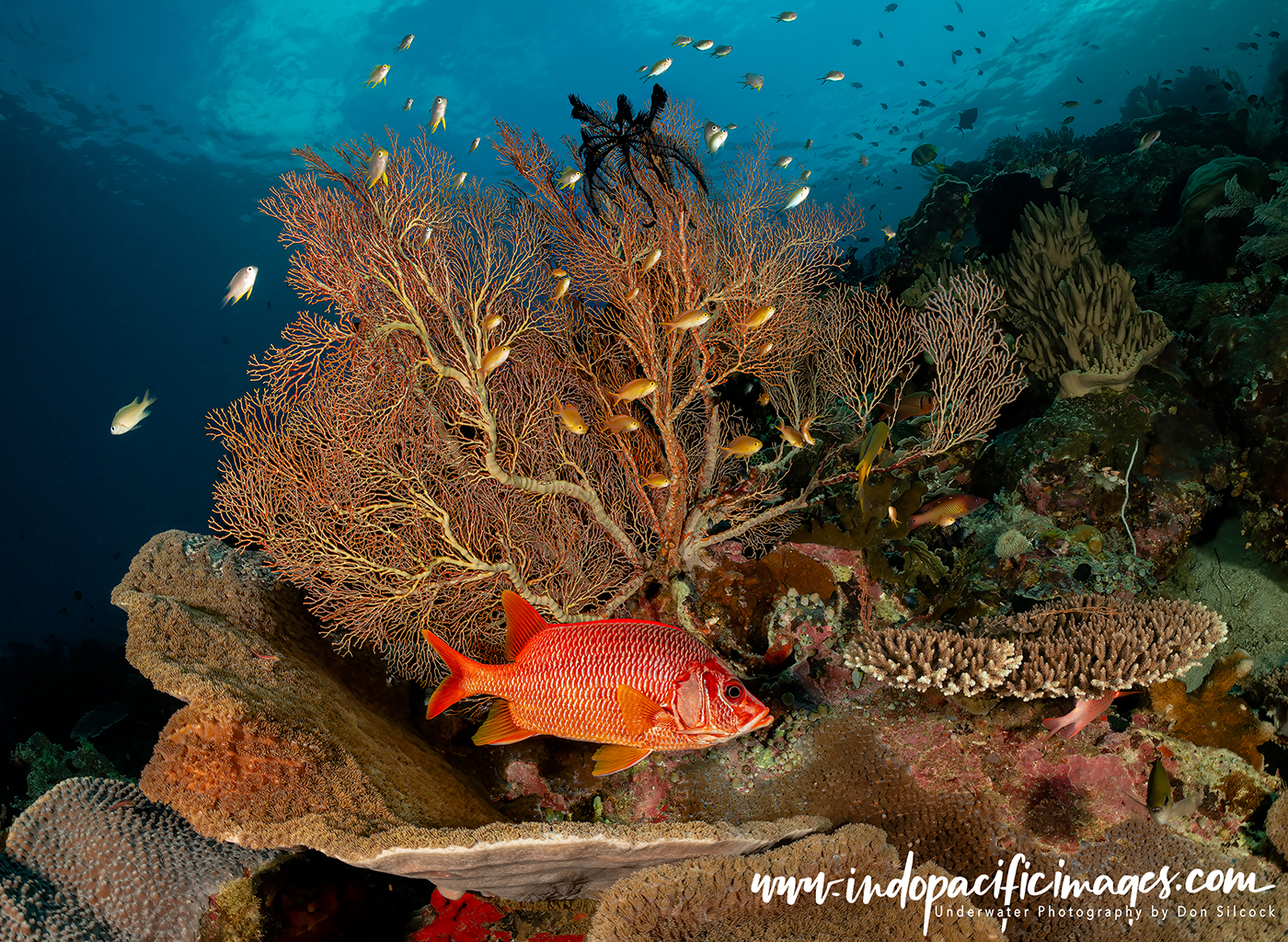
Diving the Dampier Strait – Tourism
He resolved do two key things… Start a business that would provide him with a source of income and therefore a way to help Papuans live better lives. Tourism seemed to offer the best and quickest way forward as Raja Ampat is an incredibly scenic location and he had seen what was under the water… But how to start when there was simply no infrastructure?
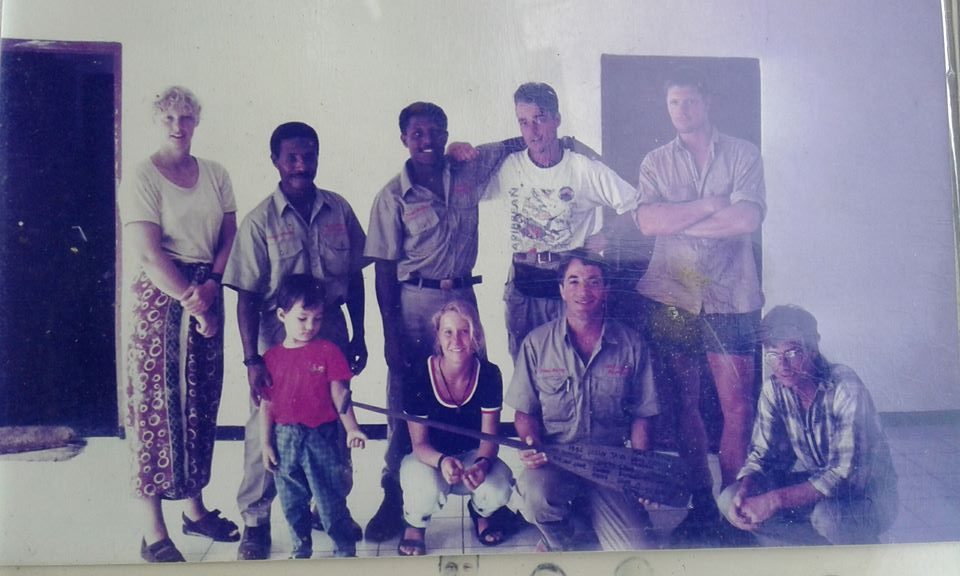
His solution was that beach “eco camp”. Offering adventurous travellers the opportunity for exceptional diving in a beautiful but truly off the grid location.
He took the idea to Yembuba village and got permission to run the camps on the site that would later become his Eco Resort on the north coast.
The concept worked and soon he had bookings two years in advance from Europeans and Americans wanting a taste of Raja Ampat adventure. And from those very humble beginnings Max has grown his dive tourism business.
With two operations on Kri with an Eco Resort on the north coast (on the site of the original beach camp). And his bespoke Sorido Bay Resort on Cape Kri itself.
Diving the Dampier Strait
Understanding a little about the flow of those nutrient rich waters through the Dampier Strait is the key to diving there. Distributed along the Strait’s relatively shallow bottom are numerous seamounts and rises that sit in the path of that water flow. And their easterly points are where the rubber meets the road… The marine growth in those areas is almost force-fed those nutrients. Creating the foundational elements for the teeming biomass that thrives there.
Probably the very best example of that mechanism is Cape Kri, on the eastern tip of Kri Island, which sits directly in the path of that water flow.
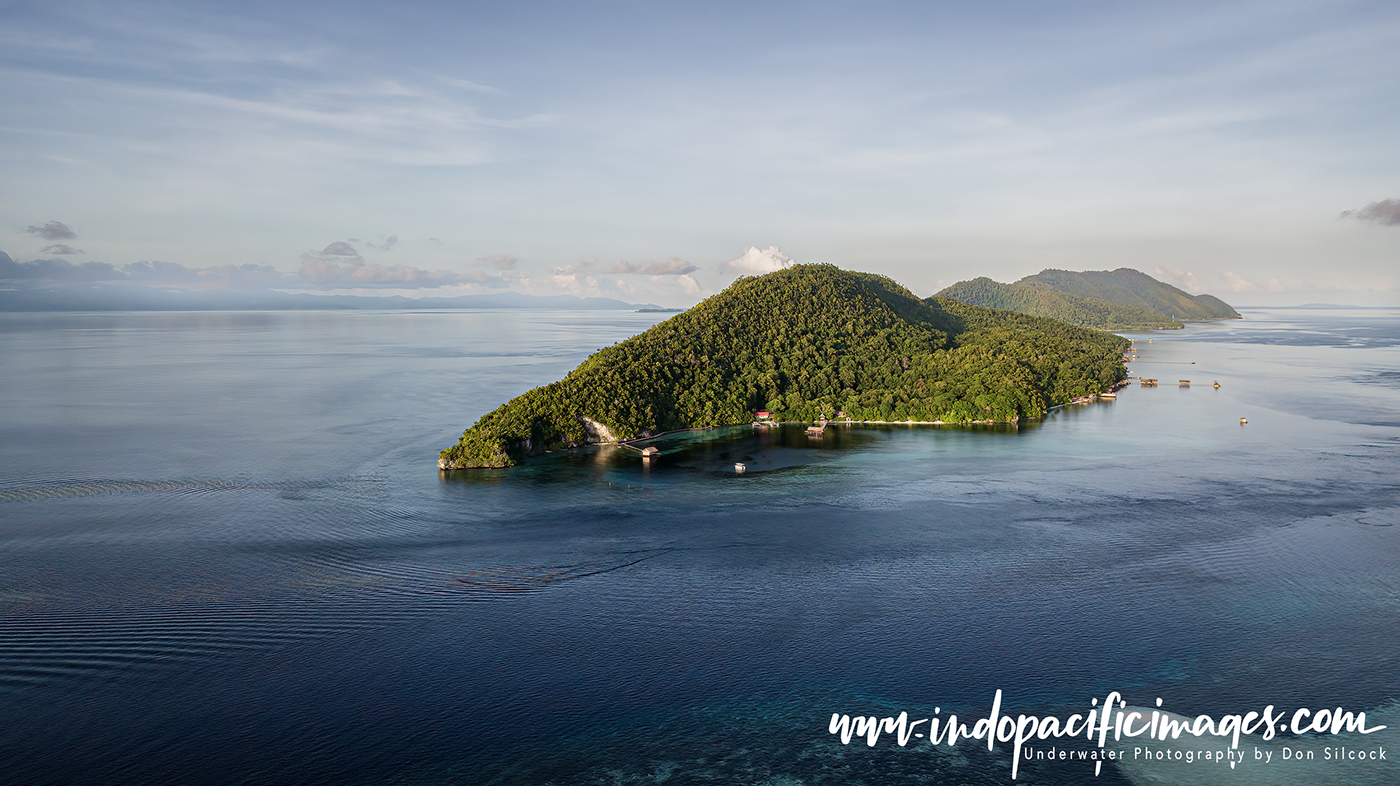
Cape Kri
Timing and local knowledge are the key to safe and memorable diving at Cape Kri… Get in the water at the wrong time and it’s the spin cycle on steroids! While local knowledge, built on long experience of diving Cape Kri, is the only way to read what is happening underwater as the currents sweep around and across the cape.
Dive after the incoming tide has peaked and you will witness the tropical marine world at its best and most dynamic. With Kri’s intense biomass, having been brought to the boil by the strength of that incoming flow, still buzzing as slack water approaches. It really is something to behold. But the reality is that most people who dive Kri (including me…) have not been there at the right time. Such as slack water on an outgoing tide, when the biomass is chilling as it waits for the fun to begin again.
Cape Kri is often referred to as the “best house reef in the world” because of its proximity to Sorido Bay resort and the species count that celebrated ichthyologist Dr. Gerry Allen (co-author of Reef Fish Identification – Tropical Pacific) carried out in 2012. Gerry identified a grand total of 374 different species in one single dive. 74 more than he identified a few years before. It’s not a coincidence that Max Ammer established his resorts on Kri…
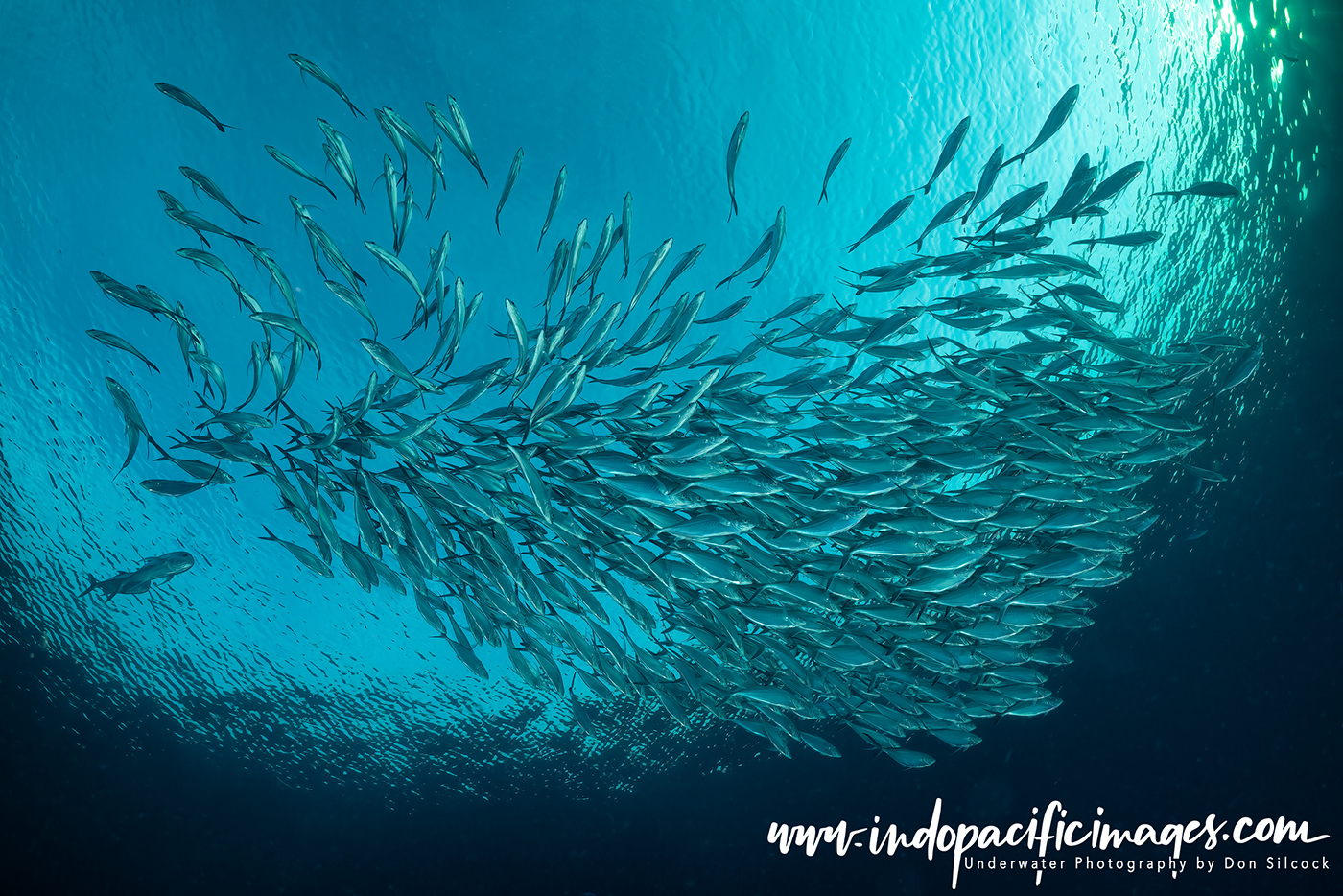
Seamounts
The seamounts of the Dampier Strait also offer some sensational diving. With the eastern sides of sites like Sardine Reef, Chicken Reef and Blue Magic all basking in those current flows. Because of their shape, diving those sites requires a negative entry and rapid descent to get to the “split-point” where the current hits the centre of the seamount.
The boat will position itself up-current from the seamount. Then cut its engines and everybody rolls backwards into the water together and descend quickly. The only exception being photographers with big cameras who must quickly get their gear handed to them. Get to the split-point and the current velocity drops to almost zero. And you can settle down and watch the show. Miss it and, unless you can deploy your current hook, you will be carried around the seamount and spend the rest of the dive on the sheltered (boring…) side.
Jetties
Many of the villages on the islands of the Dampier Strait have large jetties that stick out into the current flow. Providing habitat and shelter to numerous creatures and marine growth. The structures themselves offer excellent backdrops. Particularly around the middle of the day when sunbeams stream down through any gaps in the structure. And late afternoon when the light has a special “golden hour” quality.
My favourite jetties in the Dampier Strait are the main one at Aborek Island. And the ones at Sawandarek and Yenbuba on Mansuar Island.
Aborek jetty is particularly good because the water there is quite deep and the village kids love diving down to model for you!
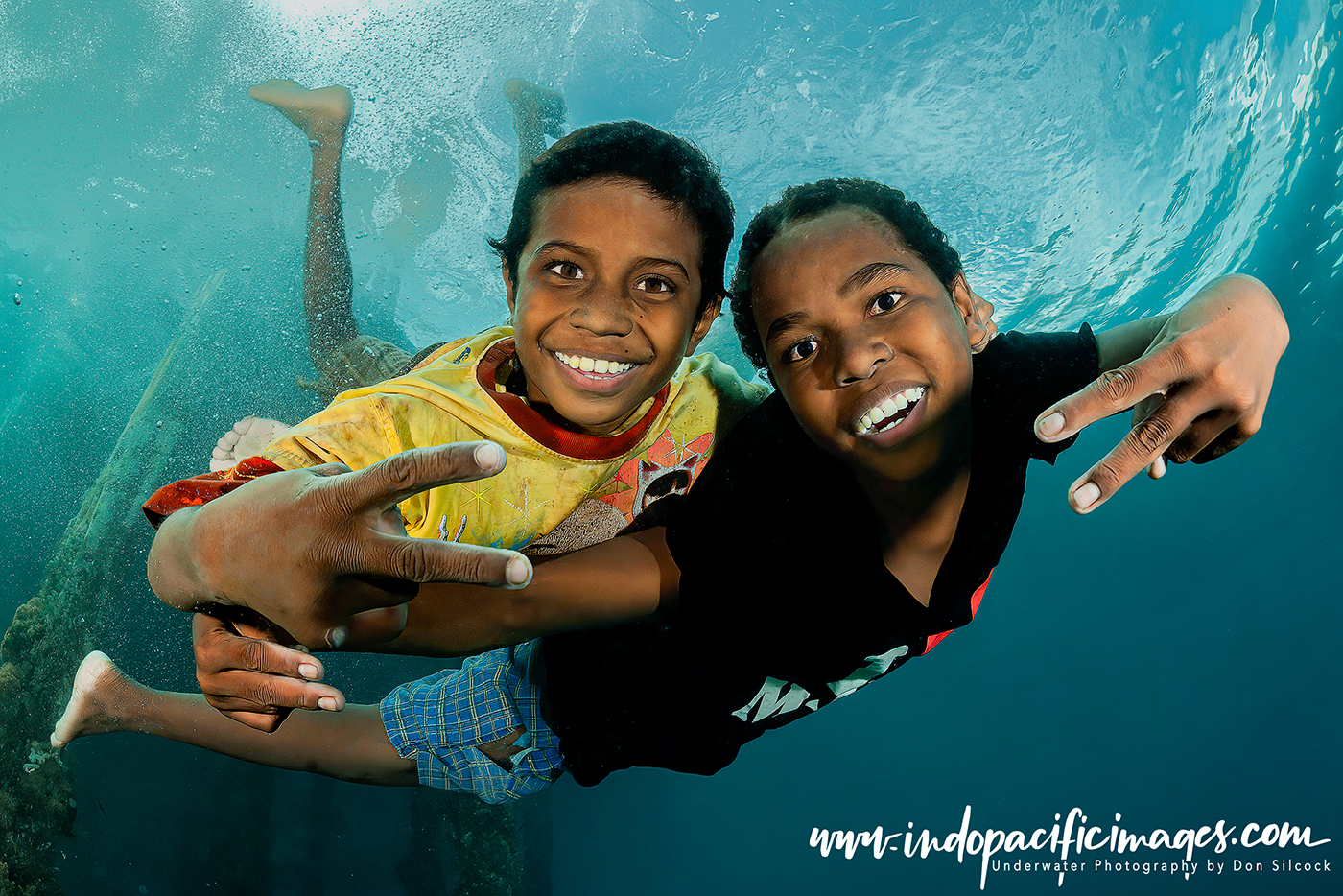
Manta Rays
No description of diving in the Dampier Strait would be complete without a mention of the manta ray cleaning station at the western end of the strait near Aborek Island. Manta Mantra is located on the southern side of the large reef that separates Mansuar Island, from the much smaller Arborek Island.
The cleaning station is several small bommies in the channel between the main reef, and a smaller one to the south. The currents that run through the channel, together with the numerous cleaner wrasse and butterfly fish on the bommies. Have created the perfect conditions for mantas to come in and be cleaned of their parasites.
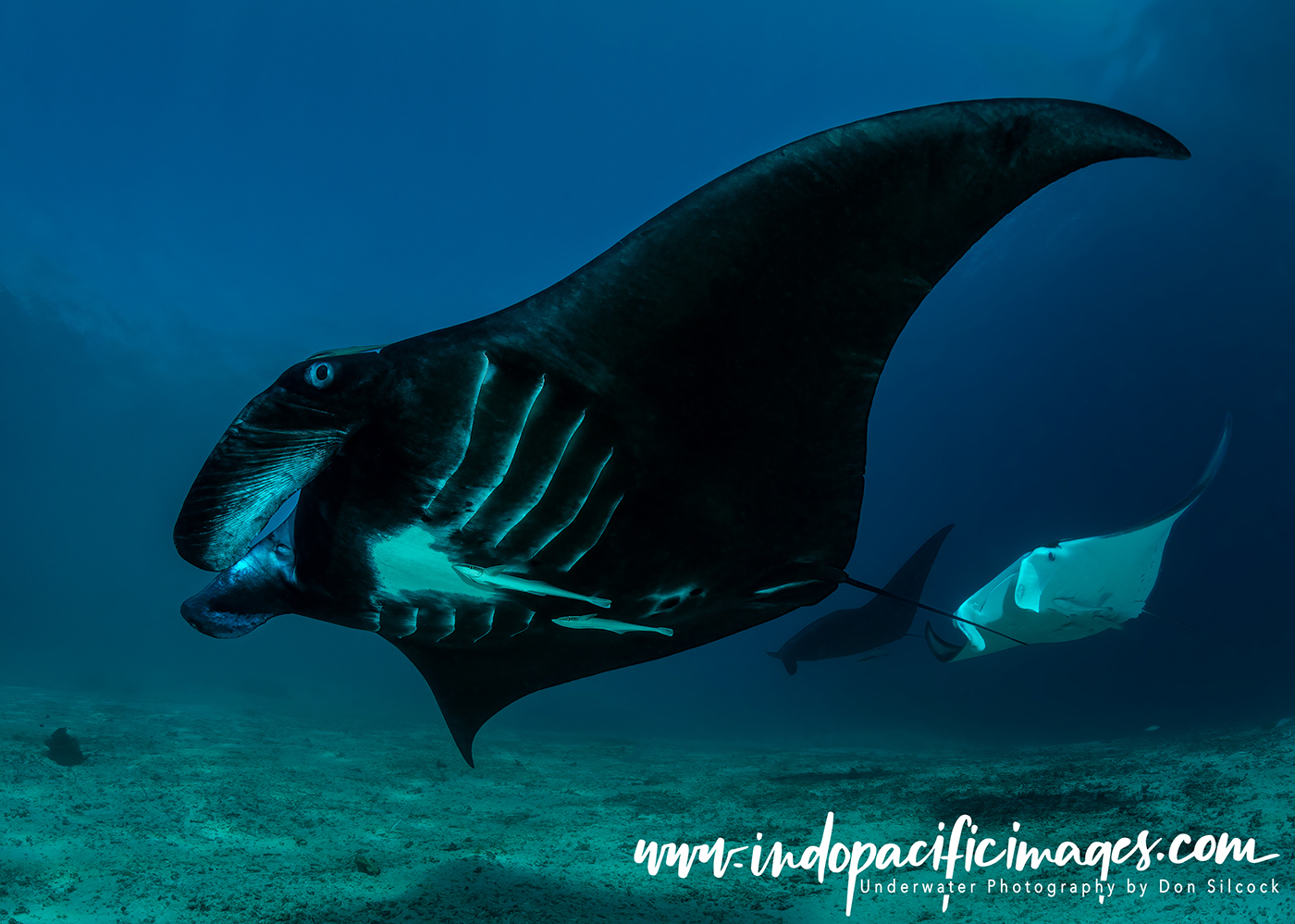
Diving the Dampier Strait – In Summary…
The Dampier Strait has some of the very best tropical diving in the world – because of the water flow that passes through it. Yes, there are currents, but with the right guidance it is all completely manageable.
If you want to experience the best… Then embrace those currents, get the right advice and see for yourself what nature can create!
Scuba Diver Article
Scuba Diver magazine recently published a seven-page article of mine on the Dampier Strait and you can use the link to download a copy of it.
